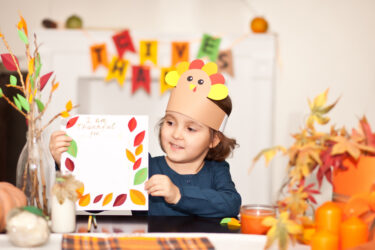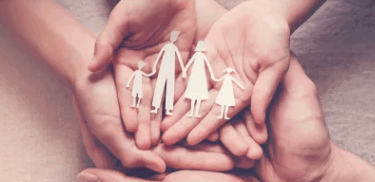An ounce of prevention really is worth a pound of cure.
 When Mary Jayne Stevens urged her 11-year-old daughter, Julie, to wear a bike helmet, she never guessed it would save her only child’s life. At first, Julie declined to use the helmet, fearing being teased by her classmates. Luckily, however, the helmet was on her head when, in a rush to get home and out of the rain, she was hit by a car.
When Mary Jayne Stevens urged her 11-year-old daughter, Julie, to wear a bike helmet, she never guessed it would save her only child’s life. At first, Julie declined to use the helmet, fearing being teased by her classmates. Luckily, however, the helmet was on her head when, in a rush to get home and out of the rain, she was hit by a car.
“She skidded against the pavement, resulting in horrific scrapes, but the actual point of impact was her head,” recalls Mary Jayne. “She was skinned and bloody, and the right side of her bike helmet was crushed,” she remembers. Hours later, Mary Jayne felt tremendous relief to discover that Julie’s only significant injuries were three broken bones in her foot. “The doctors said that if she hadn’t worn the helmet, her injuries would have been substantial, if not fatal,” says Mary Jayne.
Each year, approximately 500 children younger than age 15 die in bike accidents involving cars. More than 50 percent of fatal injuries occur when bicyclists enters the street from a driveway, sidewalk or curb without looking or yielding.
Parents are often surprised to learn that injuries, rather than disease or abuse, are the leading cause of fatalities among children ages 1 to 16. Besides head injuries, other common injuries and accidents children experience include burns, drowning, choking, poisoning, broken bones, insect stings, car accidents and handgun accidents. Most children face at least one emergency during their growing-up years, translating to 24 million pediatric hospital emergency room visits each year in the United States, and countless more emergency visits to doctor’s offices. The happy news is that about 80 percent of childhood injuries are preventable – thanks to advanced safety preparation, quick thinking and appropriate emergency measures when an accident does occur.
Get Some (Life) Support
Local mom Kathryn Boyer was shocked when she found her 2-year-old son choking on a rubber doorstop from his bedroom door. She quickly was able to dislodge the item from his mouth and he was fine. Douglas Nelson, M.D., a pediatric emergency physician, commends the fact that Boyer knew what to do and how to do it. He stresses that if a child’s airway is blocked, each second that passes without oxygen to the brain is critical and could lead to brain damage. Nelson suggests parents enroll in CPR (cardiopulmonary resuscitation) safety classes to equip themselves for similar emergencies.
Child proofing and Emergency Planning
Potential hazards for toddlers are poisonings – by medication or other common household items. A common hazard, says registered nurse Barbara Shultz, manager of the pediatric emergency department at the Monroe Carell Jr. Children’s Hospital at Vanderbilt, is medicine. “Kids are spontaneous,” says Shultz. “They pick it up. If it’s yellow, looks like juice, they drink it.” Scenarios like this make childproofing essential.
Nelson points out that there are many options in child proofing your home. “You can put locks on every cabinet and always use childproof caps – or you can simply put all dangerous items on top shelves or in locked cabinets,” he says. Consider putting house plants out of reach as well.
Besides child proofing, experts recommend developing a plan for emergencies. Teach children where to go in the event of a tornado – an inside room without windows. Conduct a fire safety drill with one or more suggested escape routes.
First Aid Kits are a Must
Whether or not skin is broken when a child scrapes his knee, tears quickly subside when a BAND-AID is applied. Preparing in advance for small medical emergencies promotes comfort and healing. You can buy a pre-assembled first-aid kit but one you assemble yourself will be customized. Include a first-aid manual, sterile gauze, adhesive tape, several sizes of adhesive bandages, antiseptic wipes, antibiotic cream, hydrogen peroxide, acetaminophen and ibuprofen, disposable instant cold packs, a thermometer, tweezers and anything else you prefer to take away the hurt. The American Red Cross also suggests that you include any personal items such as medications and emergency phone numbers or other items your health-care provider may suggest.
Use a Smoke and CO Detectors
Smoke detectors cut the chances fire fatalities in half. Even though 90 percent of US homes have at least one smoke detector installed, about one-third of all homes where fires occur have non-working smoke detectors. Check your home’s smoke detectors regularly to make sure batteries are charged, and replace any smoke detector more than 10 years old. Carbon monoxide detectors are essential as well.
A study by the Center for Disease Control and Prevention (CDC) states that each year in the US, carbon monoxide poisoning claims approximately 480 lives and sends another 15,200 people to hospital emergency rooms for treatment. Consider plugging one into outlets in bedrooms or other areas where people gather in your home.
The Internet is great for so many things … why not use it when you’re expecting?
There’s plenty of information all the way from timing your ovulation to shopping right at your fingertips. Good starting points are babycenter.com or babyzone.com. You can
even find charts that will help you time your delivery so you don’t miss important events! If you’re having difficulty conceiving or just want support, visit thebabycorner.com or salon.com‘s Table Talk.
Find out everything you want to know about what’s normal and what’s not during your pregnancy at webmd.com. Then of course, there’s the shopping! Great places to start for your little one include rightstart.com or thebabyoutlet.com.
There’s ecobaby.com for products and cloth diapers, and when Baby comes, be sure to have your announcements ready … you can get them from babiesonline.com!
Designate a Child Watcher
A familiar scenario involves a pool party where Mom thinks Dad is watching the kids and Dad thinks Mom is watching them and an accident happens because nobody is watching them. The US Consumer Product Safety Commission (CPSC) states that each year, nationwide, about 300 children under 5 years old drown in swimming pools, usually a pool owned by their family.
Designating a child watcher can apply to any situation where a supervision reminder is helpful, such as going to the park or playground together, or choosing a designated babysitter when more than one older child is home babysitting a preschooler.
Seatbelt Safety
Martha Jimenez was 15 miles from home, returning late at night from a vacation, when a drunk driver in a semi ran a red light and hit her small Toyota. The car was pressed against a brick wall, but Martha and her 2-year-old nephew Alex were alive. He was secured in his car seat and Martha was strapped in, too. Seat belt security is everything in an accident.
According to Nelson, all other safety measures pale compared with the significance of wearing seat belts and using car safety seats for babies and toddlers. The “best” car seat for your child is one that fits his size and weight, and that fits in your car correctly. For Tennessee’s carseat law, visit tennessee.gov.
Practice Handgun Safety
After car accidents, handgun incidents are the second leading cause of injury death to children up to age 19. In the United States, every two hours, someone’s child is killed with a loaded gun.
If you keep a gun in your home, be sure it’s unloaded and stored in a secure, locked location that children don’t have access to. Ammunition should be stored in a separate area away from the gun, and a trigger lock or other firing prevention device should be applied.
Safe Play
Playground injuries comprise 65 percent of injuries reported at elementary schools. Most playground injuries can be avoided by providing adequate supervision and assuring that playground equipment is in good repair and surrounded by appropriate ground covering. “I like to check the surface of the playground if we’ve never been to it to see if it would absorb the shock of a fall,” says Amanda Doggett, a Nashville mother of two.
Playground injuries occur when children play on equipment that is not age- or size-appropriate. For example, a slide that is 12 feet long is designed for older children rather than 2-year-olds. Jumping out of swings is another activity that leads to a variety of injuries such as sprained ankles and wrists.
Children and teenagers who participate in outdoor sports should always wear protective gear. This includes helmets for football, baseball, hockey, bicycling and skateboarding, and mouth protectors for sports such as football, baseball and basketball.
Bathtub Safety
Mary Donovan, a Murfreesboro mother of three young daughters, says her children were taking a bath together when 7-year-old Erin decided to close the glass shower door above the bathtub. When the door slid off its track, Erin tried to force it back until the door shattered, covering the girls with glass shards.
Nelson says bathtubs are a common site for injuries and drownings. He advises parents not to take calls when a child is bathing or else to “wrap the child in a towel and take him with you.” Luckily, Donovan’s daughters were fine.
Carolyn Cambell is a mother and freelance writer.
emergency room bound
Sometimes it’s obvious that a child needs emergency treatment and it can be stressful for all involved. “If possible, stay calm during an emergency,” Nelson says. “Releasing your emotions will only make your child more upset.” He adds that advance preparation for possible emergencies contributes to a parent’s calmness when such events actually take place.
Pediatrician Randall Hepworth, M.D., offers these guidelines in case you cannot contact your regular care provider. Head to the ER if:
- your child has a serious breathing problem
- your child has an uncontrolable seizure
- your child has a broken bone or severe wound




